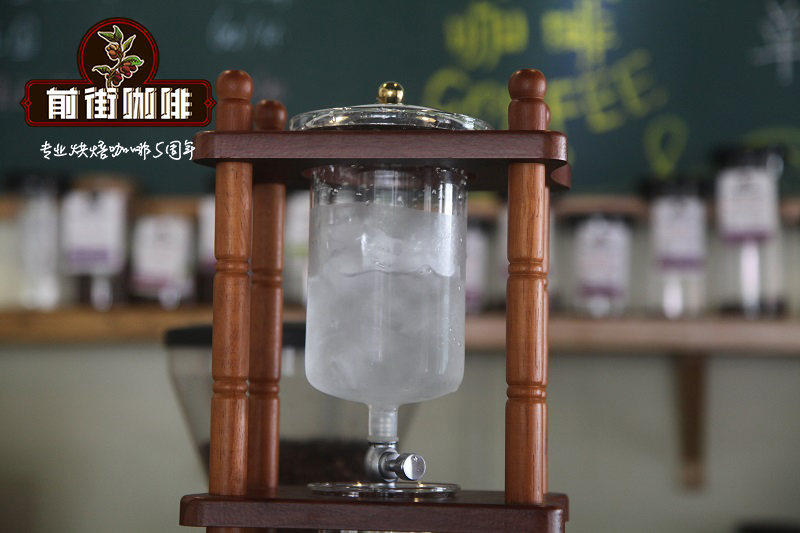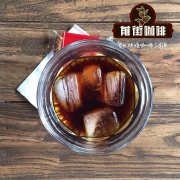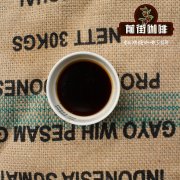What are the characteristics of Arabica coffee beans? how to distinguish Arabica coffee beans?

Professional coffee knowledge exchange more coffee bean information please follow the coffee workshop (Wechat official account cafe_style)
We often see breakfast shops or coffee shops, and it is emphasized in the propaganda that our own coffee is 100% Arabica coffee, but this is not the original.
Is it supposed to be? Coffee beans are generally divided into Arabica and Robusta.
70% of the world's coffee beans are Arabica, and the remaining 30% are robusta. So most of the coffee is Arabica.
Please don't be deceived by this article again. Arabica coffee beans are not great. They are beans that ordinary people will use. There are only grades. But there are three exceptions:
1pm 3 in 1 Coffee-to reduce costs and increase caffeine content.
2, commercial beans-in order to reduce costs.
3, mixed beans-to reconcile the flavor of coffee.
Arabica species: planted above 1000 meters above sea level, is a high-quality coffee beans.
Robusta species: planted at a low altitude of 200 meters, are inferior beans, such as Vietnamese and Indonesian coffee beans.
There is no denying the fact that apocynum venetum bean can increase the richness of coffee, and many stores add it in order to increase the thickness of alcohol and reduce the cost, but its quality and aroma are better than those of
Arabica coffee beans are still a long way off, and his coffee is three times that of Adou, which is the reason why some people get palpitations when drinking coffee.
Therefore, a good store does not use Luobu beans.
The flavor characteristics of Luobu bean coffee: it smells like tires and straw, and tastes like American coffee and coffee water sold by McDonald's.
Coffee beans can be roughly divided into three categories:
Arabica (Arabica):
Arabica coffee trees account for 69% of the world's coffee production. Arabica coffee trees are difficult to grow. They like mild days and cooler nights, and too cold, too hot, and too humid climates can be fatal. Coffee trees in Arabica need to be planted on sloping slopes at high elevations, so harvesting must be done manually, which is extremely difficult. However, due to the excellent aroma, balanced taste and low caffeine content of Arabica coffee beans, although it is not easy to grow, it actually accounts for about 70% of the total coffee planting.
Robasta (Robusta):
Accounting for 30% of the world's coffee production, Robasta coffee trees are resistant to high temperature, cold, moisture, drought and even mold. Its adaptability is extremely strong, it can grow very well on flat land, and harvesting does not necessarily need manual work, but can be carried out completely by vibrating machines. As far as planting is concerned, Robasta has many advantages in growing coffee trees, but it is a pity that the coffee beans produced are bad in aroma, bitter in taste, lack of acidity, and contain twice as much caffeine as Arabica. Robasta has more personality in the mouth of caffeine beans, which is mostly used for blending or instant coffee.
Libelika (Liberica):
Accounts for 1% of the world's coffee output
→ therefore, Arabica and Robusta are the main types of coffee bean trading and coffee futures trading in the world.
Characteristic / variety Arabica (Arabica) Robasta (Robusta)
Producing area and growing environment: the most popular coffee beans on the market, mainly growing in the plateau regions of the Western Hemisphere, including Brazil, Colombia and other Latin American countries. Among them, Brazil and Colombia are the world's first and second largest coffee producers, with a growth height of more than 200 feet and moderate and stable temperatures. It mainly grows in low-lying and hot areas of Africa and Asia. Ivory Coast is the main production, followed by Uganda, Indonesia, Vietnam, Thailand, India, etc., with a height of between 500 and 200 feet.
Harvest time and yield: Arabica coffee trees are planted from seedlings and take five years to bear fruit. The main harvest period is May-September in Brazil and April-June in Colombia, accounting for about 70% of the global market. Robasta coffee trees can bear fruit in only two to three years. The harvest time is April to August every year in Indonesia and October to April of the following year in Vietnam. The total output accounts for about 30% of the global market.
Characteristics and uses: mild taste, aroma and sour wine, high quality, relatively high price. It has the characteristics of strong resistance to diseases and insect pests, and its taste and aroma are not popular. It is mainly used for mixing and as the raw material of instant coffee.
Arabica Arabica / Robusta Robasta
Chromosome: 44 22
From planting to first harvest: 9 months, 10 to 11 months.
Ripe fruit: dropped and left on the branch
The tallest wild tree species: 7-12 m 10 m
Deep soil and shallow soil
The optimum growth temperature is 15-24 ℃ 24-30 ℃
Optimal rainfall 1500-2000 mm 2000-3000 mm
The optimum growth height is 900m-2000 m.
The growing environment is mild, cool, warm and humid.
The number of coffee beans produced by coffee trees is low and high
Accounts for about 70% of global output, about 30%.
Planting most organic planting commercial planting on a large scale
Most of the cultivated land is private farms, mostly controlled by multinational enterprises.
Artificial shaking machine for harvesting coffee beans
Disease resistance is weak and strong
Insect resistance is weak and strong.
Caffeine 1.1-1.7% 4.5-4.7%
Fruit characteristics of simultaneous fertilization and cross-fertilization
The fruit is yellow or red and dark red.
The shape of the bean is long oval, flat oval, spherical
The dividing line of the bean is S-shaped and straight.
The characteristics of cooking are sour and bitter
Average consistency (BODY) 1.2%, average 2.0%
The FLAVOR is good and bad.
Coffee beans are oval and flat in shape.
Elliptical, spherical, or nearly spherical.
Qianjie coffee: Guangzhou bakery, the store is small but a variety of beans, you can find a variety of unknown beans, but also provide online store services. Https://shop104210103.taobao.com
Important Notice :
前街咖啡 FrontStreet Coffee has moved to new addredd:
FrontStreet Coffee Address: 315,Donghua East Road,GuangZhou
Tel:020 38364473
- Prev

What about the sour Blue Mountain Coffee? how to make a good Blue Mountain Coffee? what are the skills?
Professional coffee knowledge exchange more coffee bean information please follow the coffee workshop (Wechat official account cafe_style) Blue Mountain coffee has been sent home, then how to brew it? Here we recommend seven cooking methods: 1, [Italian concentration] and [latte] did not expect that [Blue Mountain] can also do concentration! How does Blue Mountain SOE do it? Correct method of powder distribution, powder layer surface cloth
- Next

Which coffee beans are Arabica beans? what kinds of Arabica coffee are there and which ones taste better?
Professional coffee knowledge exchange more information about coffee beans please follow the coffee workshop (Wechat official account cafe_style) Arabica coffee category one. Costa Rican coffee has full grains, ideal acidity and unique strong aroma. Tarrazu of Costa Rica is one of the major coffee producing areas in the world. Costa Rica
Related
- Beginners will see the "Coffee pull flower" guide!
- What is the difference between ice blog purified milk and ordinary milk coffee?
- Why is the Philippines the largest producer of crops in Liberia?
- For coffee extraction, should the fine powder be retained?
- How does extracted espresso fill pressed powder? How much strength does it take to press the powder?
- How to make jasmine cold extract coffee? Is the jasmine + latte good?
- Will this little toy really make the coffee taste better? How does Lily Drip affect coffee extraction?
- Will the action of slapping the filter cup also affect coffee extraction?
- What's the difference between powder-to-water ratio and powder-to-liquid ratio?
- What is the Ethiopian local species? What does it have to do with Heirloom native species?

